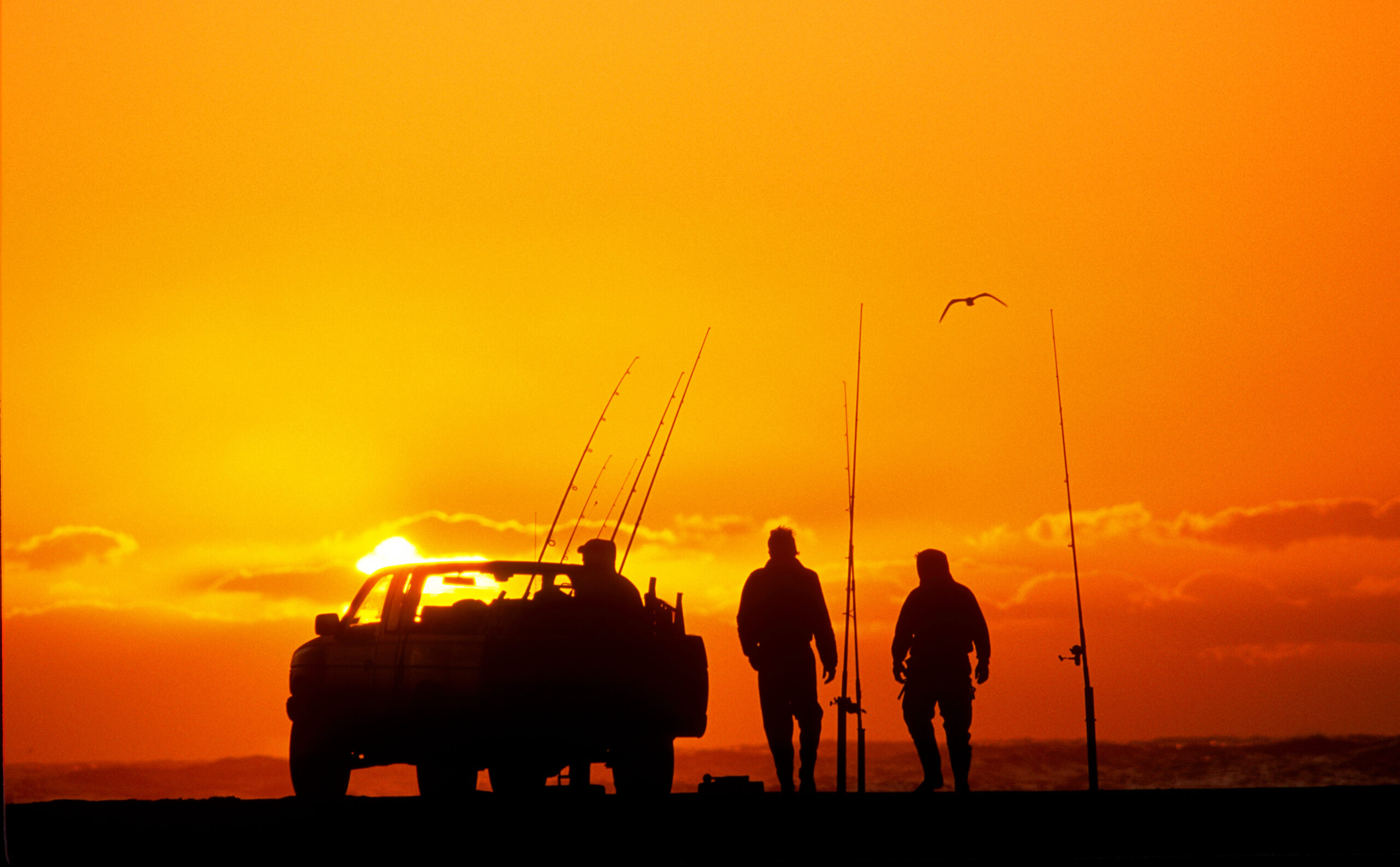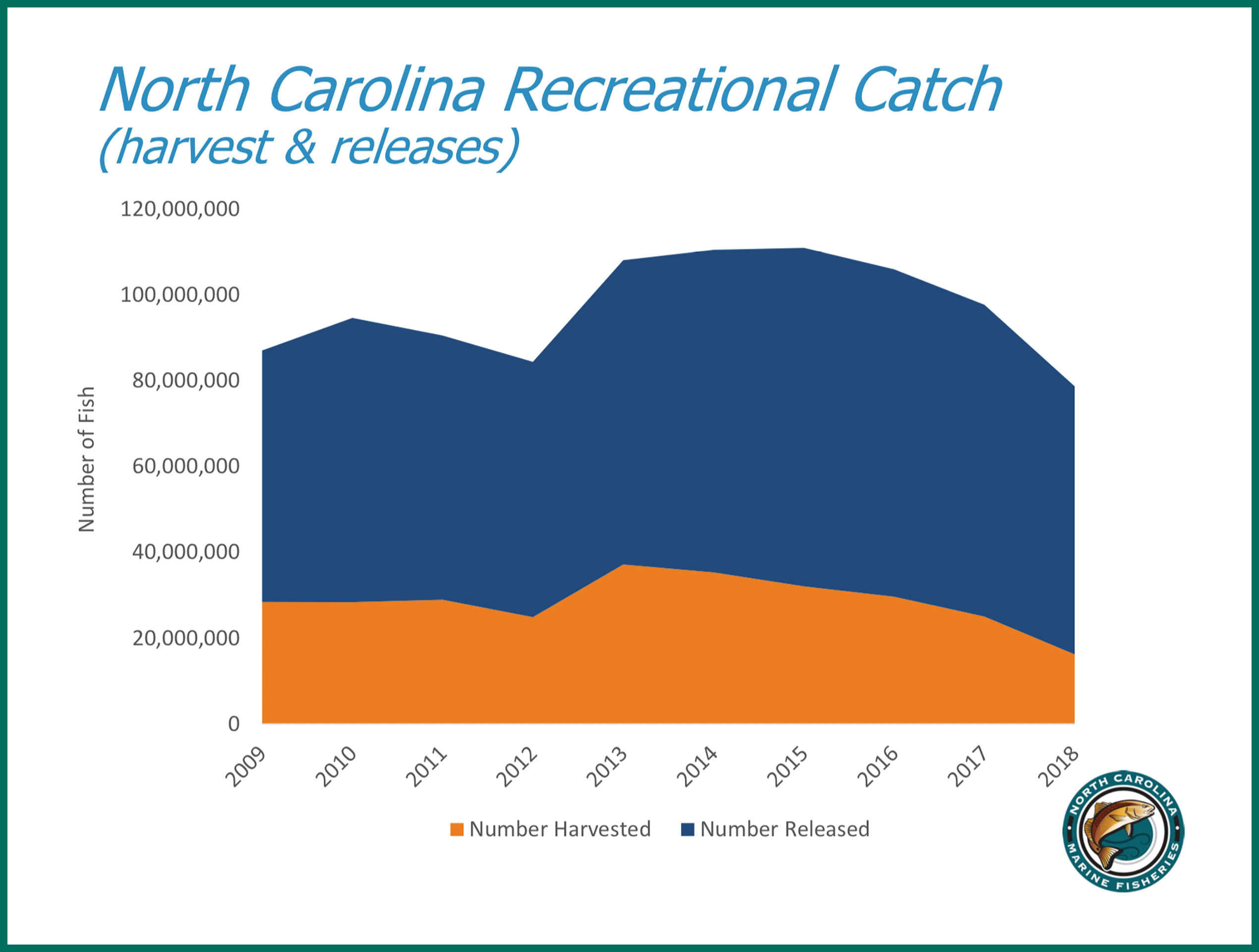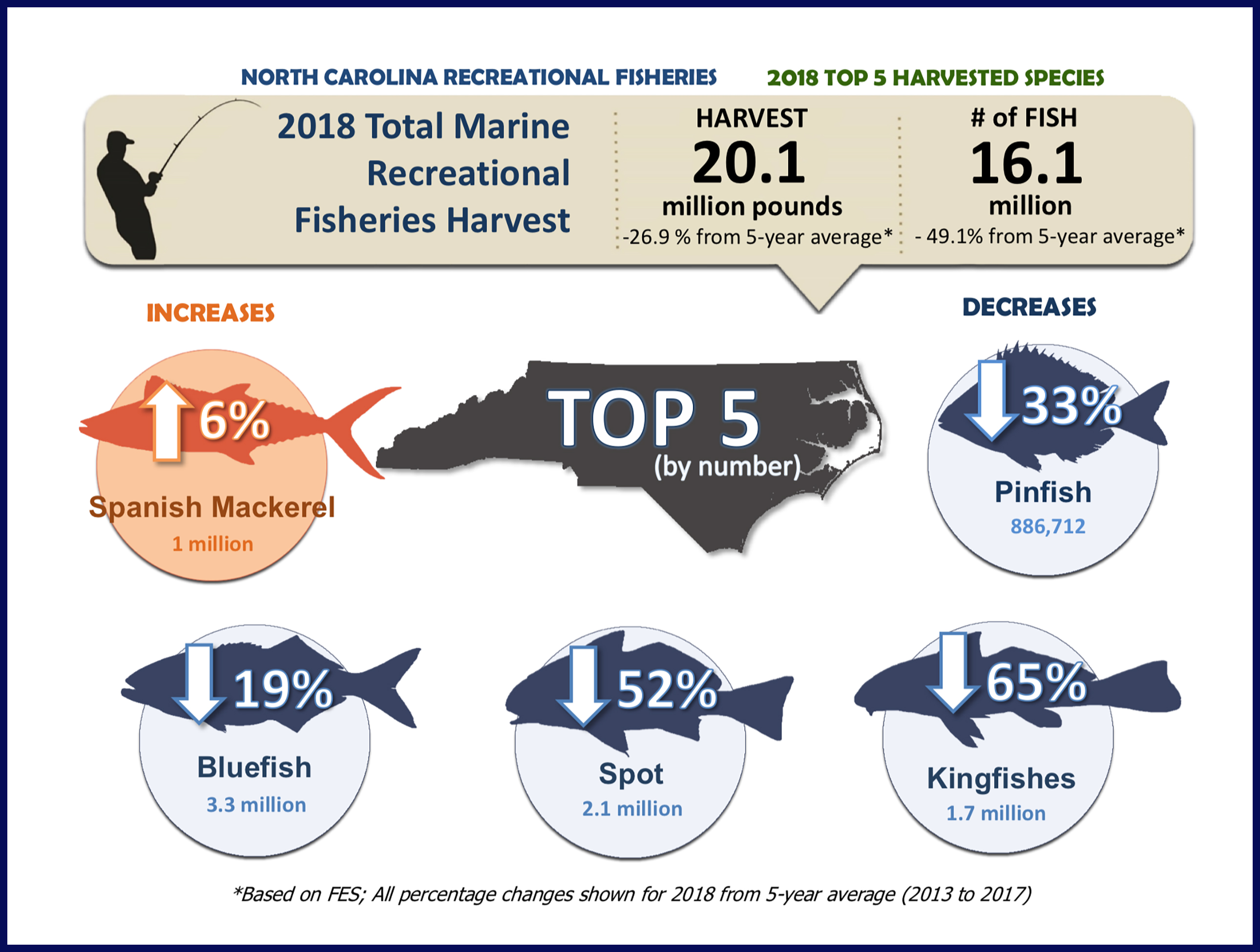Did 2018’s Hurricanes Curtail NC Saltwater Angling?

Last year, the total recreational catch declined for North Carolina anglers — but they still pulled in nearly 79 million fish.
All this recent bad weather have you gazing out the window, longing to wet a hook?
Looks like you’re not alone, especially if you felt this way last fall, too. Similar to the data on last year’s commercial fishery, 2018 saltwater angler data shows a decline in recreational catch, likely due to hurricanes and other extreme weather events.
At the August business meeting of the N.C. Marine Fisheries Commission, N.C. Division of Marine Fisheries (DMF) staff reported that in 2018 the total recreational catch — the amount of harvested fish and the amount of released fish — numbered 78.6 million.

Recreational harvest was 49% lower than the previous average from 2013 to 2017 by number of fish and 28% lower by pounds of fish. Still, in 2018 North Carolina coastal recreational fishing license holders kept an estimated 16.2 million fish that weighed in at over 20 million pounds total.
The top five harvested recreational species by weight were dolphin, bluefish, spot, yellowfin tuna, and red drum. The infographic below illustrates the top five harvested species by number: bluefish, spot, kingfishes, Spanish mackerel, and pinfish.

More of these numbers might surprise you. For instance, on 41% of fishing trips, saltwater anglers wet a hook off a beach or bank. In addition, anglers released 62.4 million fish, around four times as many as they kept last year. In fact, since 2013, the proportion of released fish to the total catch has been increasing.
The DMF Coastal Angling Program, which collects and maintains data for a variety of different recreational fishing surveys, provides estimates of recreational fishing catch and effort. The program interviews around 23,000 anglers and sends out an additional 24,000 surveys per year. The data helps researchers understand the wide range of saltwater angling efforts, including, as mentioned above, numbers of fish harvested and released, as well as the number of angler trips. Scientists even can use these data in population models to determine statewide stock assessments and fishery management plans, and to understand when fishing mortality is related to saltwater angling activities.
Sustainable fishing begins and ends with fishermen. Saltwater anglers support the long-term health of coastal fisheries by serving as eyes and ears on the water and sharing information on their fishing activities.
View DMF’s commercial and recreational fisheries infographics here.
Summary compiled by Sara Mirabilio
Lead photo by Bill Russ/VisitNC.com
The text from Hook, Line & Scienceis available to reprint and republish, but only in its entirety and with this attribution: Hook, Line & Science, courtesy of Scott Baker and Sara Mirabilio, North Carolina Sea Grant. HookLineScience.com



